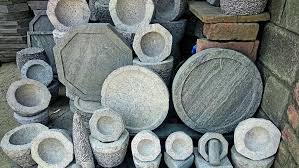
Menu

Stone carving in Kashmir is an ancient art that once adorned mosques, temples, bridges, and palaces with intricate elegance. From the majestic Martand Sun Temple ruins to delicately carved graves and fountains in Srinagar, stone’s cold solidity was transformed by Kashmiri artisans into flowing arabesques, floral vines, and geometric brilliance.
Artisans historically worked with local limestone and sandstone, chiseling elaborate jali screens, calligraphy panels, and ornate arches that reflected Central Asian and Persian influences alongside local motifs. Each carving required immense patience, vision, and a deep understanding of the material’s grain and fracture lines.
Sadly, this rich tradition has declined dramatically. Modern construction favors cheaper concrete and metal, and few master carvers remain to pass on their skills. While some restoration projects have revived interest, consistent demand and training opportunities are scarce.
Yet preserving Kashmiri stone carving is vital for maintaining the region’s architectural heritage and aesthetic identity. Supporting restoration efforts, commissioning new work, and documenting designs can all help.
To appreciate Kashmiri stone carving is to see permanence and poetry in rock—to recognize the artistry that once turned mountains into monuments of culture and faith.

@THE INDIAN ART COTTAGE
© The Indian Art Cottage | All Rights Reserved | 2025